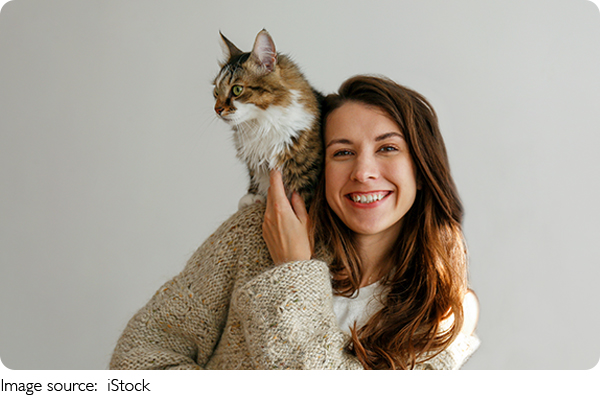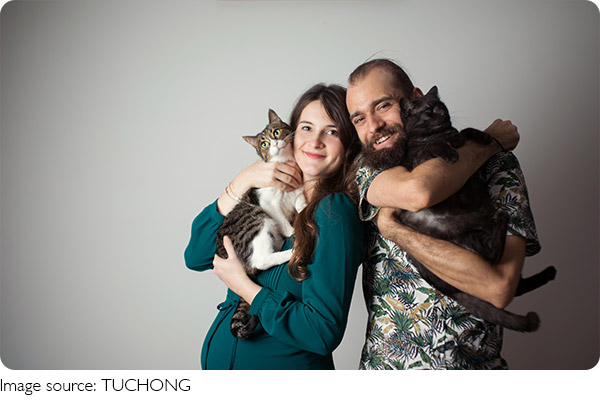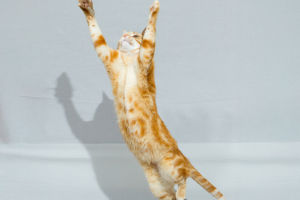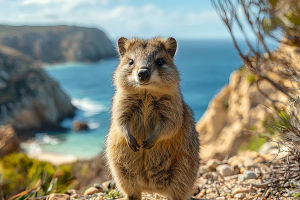Cat Independence

As pet owners, we often marvel at the way cats balance their independent nature with moments of utter affection.
One moment, your cat is nestled comfortably on your lap, purring contentedly, and the next, it's strutting off to its favorite hiding spot, seemingly indifferent to your presence.
This blend of self-sufficiency and dependence is one of the unique traits that make cats both intriguing and lovable. But why do they behave this way, and how can understanding this duality improve your relationship with them? Let's explore the psychology behind the independent yet affectionate nature of cats.
The Independent Nature of Cats
Cats are often described as the epitome of independence. Unlike dogs, which tend to be pack animals, cats evolved as solitary hunters, and their instincts still reflect this. In the wild, cats often hunt alone, marking their territory and ensuring they don't rely on others for their survival.
This solitary survival instinct carries over into domestic life, where cats may often seem aloof or uninterested in constant interaction.
Self-reliance is their foundation. Cats are highly self-sufficient. They groom themselves, find their own favorite spots to rest, and are typically content with exploring their surroundings without needing constant supervision. For a cat, being alone isn't the same as feeling lonely. It is simply an opportunity to recharge and engage in self-directed behavior, like playing, exploring, or napping.
Personal space is a must. Cats are very particular about their personal space. They'll often go to great lengths to create a safe space in your home—whether that's the top of a bookshelf, under the bed, or a sunny spot by the window. Cats feel secure when they have control over their surroundings, and as a result, they may retreat into these safe spaces to rest or simply observe their environment.
This independence is not an indication of neglect, but rather a reflection of their natural instincts to protect their space and retreat when they need to.
The Dependence of Cats
While cats enjoy their independence, they also form strong bonds with their human companions. This dependence can sometimes take owners by surprise, especially when a cat that seems aloof suddenly demands attention. Understanding the different ways cats show affection can help you navigate this balance of independence and dependence.
Affection through proximity. Unlike dogs, who may openly seek affection, cats often express their dependence through proximity. A cat that follows you from room to room, rubs against your legs, or curls up next to you on the couch is signaling its attachment. These subtle signs of affection show that, while your cat may not constantly need your attention, it does seek comfort and connection with you when it feels safe.
Vocalizations and behavior. Cats may also express their dependence through vocalizations, like meowing or purring, to communicate their needs. While not all cats are vocal, many will "talk" to their owners to indicate hunger, discomfort, or simply a desire for attention. This behavior is a clear sign that, despite their independent nature, cats need humans to fulfill certain emotional and physical needs.
Health dependence. One of the most important ways cats rely on humans is for health and care. Cats depend on their owners for nutrition, medical care, and protection from dangers, which makes their dependence more evident. Regular veterinary visits, proper diet, and attention to their physical and mental well-being are vital for maintaining a cat's health.
In times of illness, your cat may become more clingy and needy, relying on your presence for comfort and reassurance.
Understanding the Balance
The key to understanding your cat's behavior lies in recognizing the delicate balance between its independence and dependence. Cats are not solitary creatures who want nothing to do with humans, but they do value their freedom and need time to themselves. It's important not to misinterpret their need for alone time as a lack of affection.
Observe body language. Understanding your cat's body language is the best way to interpret its needs. A cat that's sitting with its tail wrapped around itself or has its ears flattened may be signaling that it needs some space. However, a cat that's kneading with its paws, rubbing against your face, or purring loudly is showing affection and a desire for connection.
Respect their boundaries. While it's natural to want to shower your cat with attention, it's equally important to respect their boundaries. If your cat walks away from you or seems disinterested in being held, it's essential to give them space. This self-awareness of when your cat wants company and when it wants solitude can help maintain a harmonious relationship.
Provide enrichment and stimulation. Cats may be independent, but they still need mental and physical stimulation. Toys, climbing trees, and interactive playtime can help your cat engage with you while respecting its desire for autonomy. Keep in mind that cats enjoy challenging themselves with puzzles and hunting-style toys, which satisfy both their instinctual needs and need for stimulation.
How to Foster Both Independence and Connection
Balancing your cat's need for independence with its desire for connection can be rewarding for both you and your pet. Here are a few tips to help create a fulfilling environment:
1. Provide private spaces – Offer your cat cozy spots where it can retreat when it needs time alone. A cat tree, a high perch, or a quiet corner can give your cat the space it craves.
2. Establish a routine – Cats feel secure when they know what to expect. Regular feeding times, play sessions, and grooming can help meet their physical and emotional needs.
3. Encourage play – Playtime is essential for your cat's mental stimulation. Incorporate toys that mimic prey, such as feather wands or laser pointers, to engage their instincts in a healthy way.
4. Understand when to give attention – Pay attention to the signs that your cat wants affection. If your cat is napping, playing, or hiding, respect its need for personal time. But if it's sitting nearby or making eye contact, it may be looking for companionship.

Conclusion: A Unique Bond
Cats are complex creatures that seamlessly blend independence with moments of intense dependence. Understanding these contrasting traits is key to building a strong, healthy relationship with your feline companion.
The next time your cat hops onto your lap for a cuddle or, alternately, disappears into its favorite hideaway, remember that both behaviors are rooted in its natural instincts. By respecting your cat's need for both space and affection, you'll foster a deeper, more meaningful connection.
So, whether your cat is curling up for a nap beside you or confidently navigating the house on its own, know that it's just being a cat—and showing you love in its own unique way.
-
 Cat's Hunting InstinctUnleash your cat's wild side with toys and interaction to keep them happy!
Cat's Hunting InstinctUnleash your cat's wild side with toys and interaction to keep them happy! -
 Quokka Adventure TimeWhy We Can't Stop Smiling at Quokkas—The Tiny Australian Hoppers That Melt Our Hearts!
Quokka Adventure TimeWhy We Can't Stop Smiling at Quokkas—The Tiny Australian Hoppers That Melt Our Hearts! -
 Quokka Adventure TimeWhy We Can't Stop Smiling at Quokkas—The Tiny Australian Hoppers That Melt Our Hearts!
Quokka Adventure TimeWhy We Can't Stop Smiling at Quokkas—The Tiny Australian Hoppers That Melt Our Hearts!